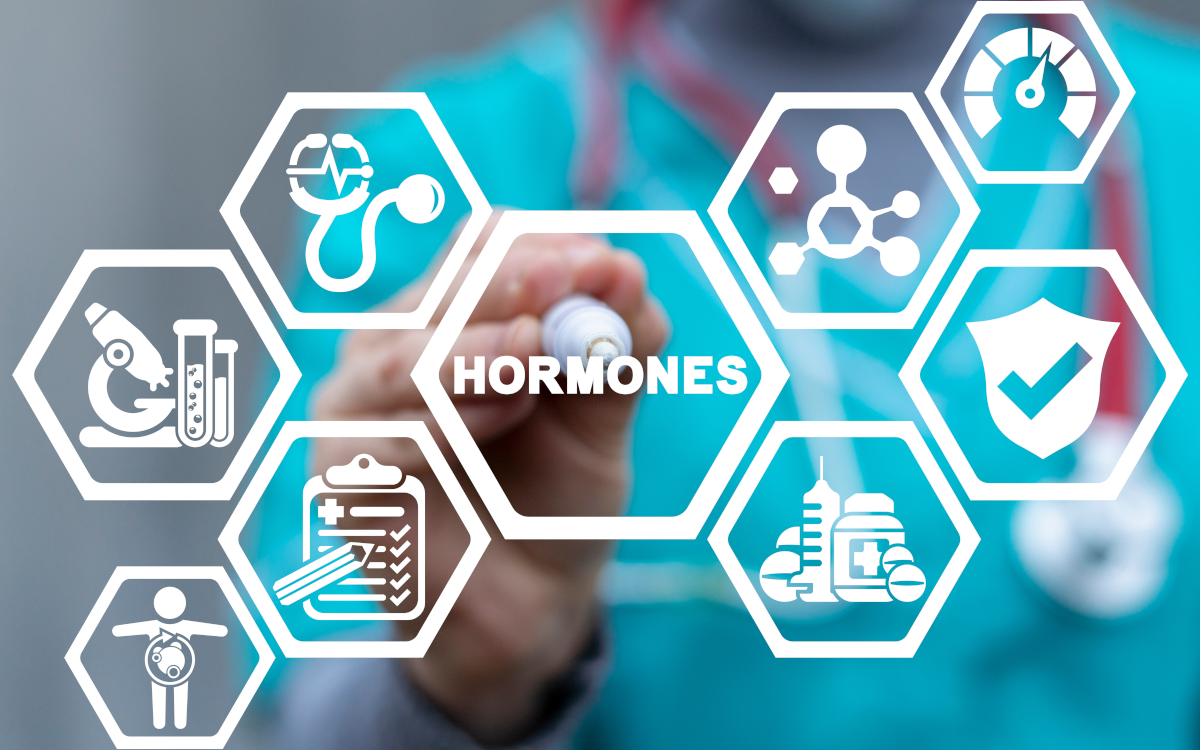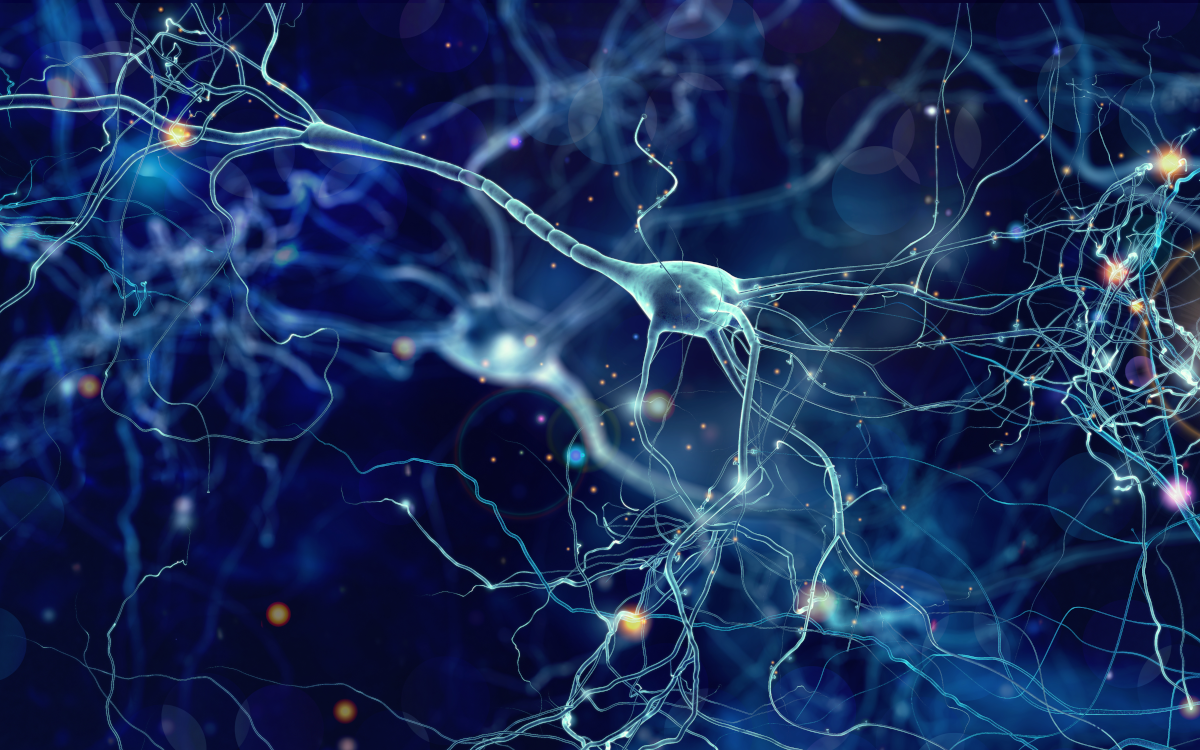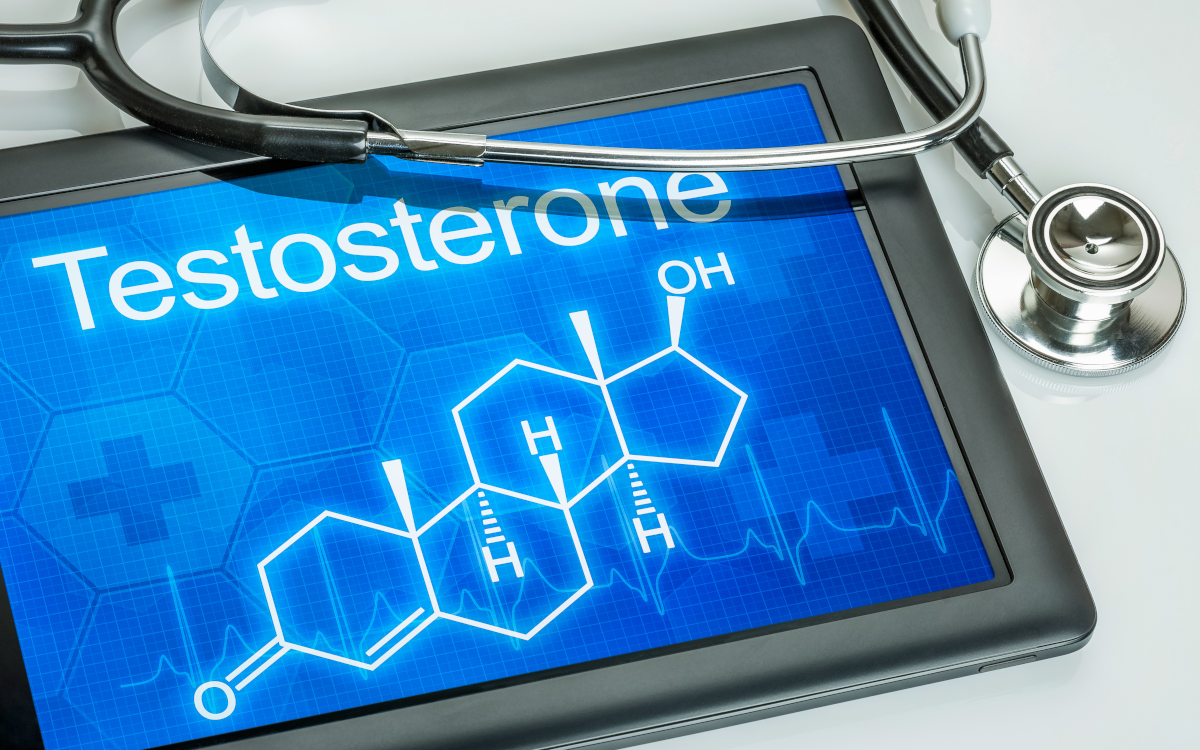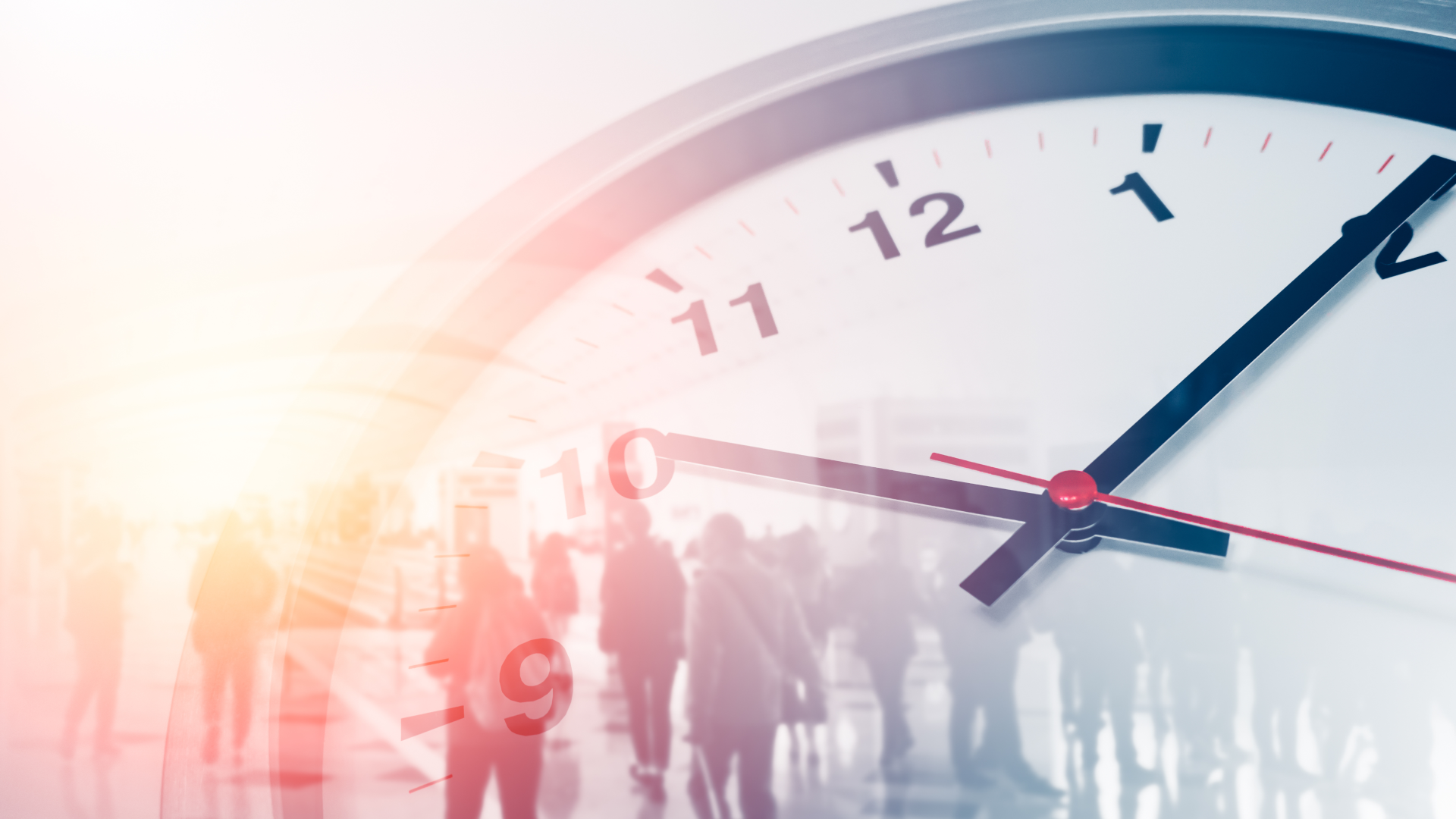Testosterone gets a bad reputation.
When most people hear the term ‘testosterone’, they tend to think of angry men trying to be macho, start a fight, or do something reckless and dangerous.
But it’s actually a crucial hormone that impacts multiple areas of health, fitness, libido, mood, energy levels, and overall wellbeing.
So we want to set the record straight and show that testosterone is more than just a buzzword for masculinity or overt manliness.
We’re here to break down exactly what testosterone is, what it does, what happens when your testosterone levels are too low, and how to boost those levels right back up again— especially as you age.
So strap yourself in, as we go through everything you need to know about this important sex hormone and how it can improve your health, happiness, fitness levels, and sex life.
What is testosterone?
First of all, let’s take a quick look at what testosterone actually is and why it’s so important.
Testosterone is a steroid hormone that plays a multifaceted role in the human body, influencing plenty of physiological functions.
It’s a key member of the androgen family that’s primarily produced in the testes in males and in smaller amounts in the ovaries in females, with the adrenal glands also contributing to its production in both men and women.
The main function of testosterone is to promote sexual development and reproduction.
During puberty, testosterone plays a big-hitting role in the development of secondary sexual characteristics, such as facial and body hair growth, deepening of the voice, and increased muscle mass. Testosterone also stimulates the production of sperm in males and affects fertility and libido.
These are all relatively well-known aspects of testosterone, but there’s still much more that it does. Testosterone also contributes to your overall wellbeing, plays a part in bone density maintenance, muscle growth, and regulating mood, and brain function.
Although it’s produced at much lower amounts, testosterone is also important for women too, as it serves essential functions like helping to maintain their bone density, muscle mass, and libido.
Whereas a testosterone deficiency in men can cause health issues, too much testosterone in adult females can lead to conditions like polycystic ovary syndrome (PCOS), which can impact their fertility and general health.
What does testosterone do?

There’s clearly a lot that testosterone does in the human body. And while testosterone is primarily known as a male sex hormone, it also plays important roles in females.
So let’s take a deeper dive into the impacts of enhanced and reduced testosterone production in men and women.
Testosterone function in males
As the main male androgen, testosterone has a say in a whole host of biological functions.
Sexual development
During fetal development, testosterone is crucial for the differentiation of male reproductive organs, where it influences the development of the penis, scrotum, and prostate gland.
Then during adolescence, there’s a massive jump in testosterone production, which we all know as puberty. These enhanced levels of testosterone promote the growth of facial and body hair, deepens the voice, and contributes to the development of muscles and bone mass.
Sperm production
Testosterone also stimulates the production of sperm within the testes, which is important for fertility and reproductive function in males.
Libido and sexual function
Another classic stereotype of testosterone is that it influences male sexual desire (i.e. libido) and leads to arousal and erections, but in this case that’s absolutely true.
As testosterone is crucial for the normal development and functioning of the male reproductive system and sexual function, this naturally includes things like increased sex drive, erectile function, and sexual performance.
Muscle mass and strength
Testosterone is an anabolic hormone that leads to physical changes, so it promotes muscle growth and increases muscle strength in males.
Bone health
Solid testosterone levels also influence bone density, contribute to bone health, and help prevent the development of osteoporosis.
Cognitive function
The relationship between testosterone and cognitive function is still being fully determined, studies suggest that testosterone has an influence on various aspects of cognitive performance, including spatial abilities and memory.
Mood regulation
There are also links between testosterone and mood, as it contributes to feelings of wellbeing, confidence, and even assertiveness.
Testosterone function in females
While estrogen is the primary female androgen, testosterone still plays a role in female health and sexual wellness as well.
Sexual desire and libido
Testosterone has an effect on female sexual desire and libido, although its importance here is less understood than in men.
Bone health
Women also require testosterone for maintaining bone health and preventing bone loss, with low testosterone levels being linked to an increased risk of osteoporosis in women.
Energy and wellbeing
Just like it does with men, testosterone can influence energy levels, mood, and overall wellbeing in females, although the mechanisms are not yet fully known.
Muscle mass and strength
Testosterone contributes to muscle development and strength in women as well as men.
Read: The Most Common Myths About Testosterone…Busted
How is testosterone produced and measured?

The hypothalamus and pituitary gland are primarily responsible for controlling the production of testosterone and maintaining optimal levels.
But the regulation of testosterone levels in the human body is a pretty complex process that involves various feedback mechanisms.
Here it goes…
- Hypothalamus: Your hypothalamus releases a hormone called gonadotropin-releasing hormone (GnRH) which signals the pituitary gland to produce luteinizing hormone (LH) and follicle-stimulating hormone (FSH).
- Pituitary gland: LH then stimulates the Leydig cells in the testes to secrete testosterone. FSH, on the other hand, helps promote sperm production.
- Testes: Those Leydig cells in your testes will then produce testosterone in response to the LH stimulation.
- Negative feedback loop: As your testosterone levels rise, they act on the hypothalamus and pituitary gland to inhibit the release of GnRH, LH, and FSH. This negative feedback loop helps maintain a balance in testosterone levels and keep them within a normal range.
So that’s how it all happens, but what about measuring your testosterone levels?
Doctors usually rely on blood or saliva tests to measure how much testosterone a person produces.
These tests can provide insight into their total testosterone, free testosterone, and bioavailable testosterone levels. Normal testosterone ranges vary across age groups and genders, with higher levels generally seen in males.
Although there are home-testing kits available, the most accurate ways to determine testosterone levels require reliable laboratory tests and proper medical reference ranges to interpret the results. So it’s important to consult with a healthcare professional to discuss any potential implications.
Readouts on these tests will generally look at three different measurements
Serum total testosterone
The majority of your circulating testosterone is bound to a protein called sex hormone-binding globulin (SHBG).
Serum testosterone is a commonly used measurement when evaluating testosterone status, as it refers to the total amount of testosterone circulating in your bloodstream—both the bound and unbound forms.
Free testosterone
While some testosterone is bound to proteins in the blood, a fraction of it circulates freely. Naturally, the testosterone that’s not bound to any proteins is known as free testosterone.
This is considered to be the biologically active form as it’s readily available for use by the body's tissues and cells, making it responsible for the hormone's effects.
Bioavailable testosterone
Also known as non-SHBG-bound testosterone, bioavailable testosterone is the combination of free testosterone and testosterone that is loosely bound to albumin.
Testosterone is only weakly bound to albumin and dissociates freely in the capillary bed, so it’s also considered to be readily accessible to cells and tissues for biological functions.
What is a low level of testosterone?
So, what constitutes a low level of testosterone?
According to most medical practitioners, normal levels fall between 300 to 1000 nanograms per decilitre (ng/dL) of testosterone in your blood.
Anywhere within this range is generally considered to be healthy. But if you’re towards the lower end or below, this is when you may begin to experience problems with your health or virility.
How common is low testosterone?
Exact numbers are tricky to calculate, and the figures vary from source to source.
Some recent estimates suggest that around 2% of adult males suffer from low testosterone levels (which is also known as hypogonadism)—that figure rises to around 8% in men aged 50 and above.
Others put the numbers much higher, with around one in four men over the age of 30 said to experience low levels of testosterone, but only one in 20 may display noticeable symptoms.
Whatever the real number may be, the main thing to understand is that you can manage and reverse low testosterone through simple lifestyle changes, which we’ll discuss below.
But first, we’ll look at why low levels of testosterone can be so problematic if left unchecked.
What causes low testosterone?

If you’ve got testicles, you could experience low blood testosterone levels at any time in your life—from birth right throughout adulthood.
It sounds a bit terrifying when put like this, but it isn’t a foregone conclusion by any stretch of the imagination. It’s simply that the minimum requirement to experience hypogonadism is to have, well, gonads.
There are lots of other factors that can either hinder testosterone production or enhance the likelihood of reduced levels.
Age is a major one. Your testosterone levels naturally decline from around the age of 30 or 40 onwards, at a rate of between 1 to 3% a year, according to most estimates. So you may become more susceptible to male hypogonadism the older you get.
Other contributory characteristics include…
- Obesity
- Metabolic syndrome
- Type 2 diabetes
- Testicular injuries
- HIV/AIDS
- Previous issues with undescended testicles
- Chemotherapy
- Chronic medical conditions (e.g. liver cirrhosis)
As you can see, some of the risk factors relate to former or current medical issues. That said, there are also plenty of lifestyle factors that can cause testosterone levels to decline.
What else affects normal testosterone levels?
If any of the previously mentioned medical disorders apply to you, then you should contact your healthcare provider to discuss any potential impacts and testosterone treatment options.
But how about the more general and day-to-day factors? There are plenty of those that can impact normal testosterone levels too, including:
- Poor diet: Too many processed foods and drinks that are packed full of sugar are not good for your testosterone levels. Sugar spikes your blood glucose levels, which enhances insulin production while decreasing testosterone.
- Smoking (and other substances): Opioid-based drugs can suppress testosterone production by up to 50%, while amphetamines, cannabis, and nicotine can all cause oxidative stress, causing testicular damage and reducing spermatogenesis.
- Alcohol: Unfortunately, alcohol isn’t much better, as it can also cause cellular damage in your testicles as well as disrupt hormone production in your brain.
- Weight gain: An enzyme in body fat called aromatase converts testosterone into estrogen. So an increase in body fat means an increase in estrogen production at the expense of testosterone.
- Lack of exercise: As well as reducing harmful body fat, regular strength training also induces the production of growth hormones and testosterone.
- Chemicals: Environmental exposure to certain chemicals and toxins can also disrupt testosterone production. Pesticides, heavy metals, and endocrine-disrupting substances like Bisphenol A (BPA) have all been linked with decreased testosterone levels.
- Stress: An increase in cortisol (the stress hormone) can impact testicular production of testosterone, and it also creates a negative feedback loop that hampers the hypothalamic-pituitary-gonadal axis (HPG axis) from releasing male sex hormones.
- Lack of sleep: Sleep is vital for hormone regulation. It only takes a couple of hours of sleep deprivation per night to cause a 10 to 15% drop in testosterone levels.
- Lack of sunlight: There’s a strong link between vitamin D levels and testosterone, with deficiencies in one often leading to deficiencies in the other. So too much time spent indoors is not good for either.
- Tight clothing: If your underwear or jeans are too tight and constrictive they can restrict blood flow to the testicles, which hinders their ability to produce testosterone.
- Medications: Some meds can affect testosterone production. Certain drugs used for the treatment of prostate cancer, such as androgen deprivation therapy, can significantly lower testosterone levels. So can various antibiotics, beta-blockers, antidepressants, tranquillizers, antihistamines, blood pressure drugs, and other medications.
- Anabolic steroids: Likewise, anabolic steroids can have androgenic effects. When you introduce synthetic testosterone into your system, your body’s own production of testosterone in the testes will be suppressed.
- Medical conditions: Along with medical disorders listed above, things like pituitary disorders, hormone imbalances, and sexually transmitted infections (STIs) can also play havoc with normal testosterone levels.
- Injuries: Physical injury to the testicles can have an impact too, as damage or trauma to such a delicate area can lead to problems with the production and release of testosterone into the bloodstream.
So, that’s why you might be having hormone troubles, but what sort of things might alert you to the fact that your testosterone levels are dropping in the first place?
What are the symptoms of low testosterone?
It can actually be pretty tricky to know what is a side effect of low testosterone and what is just a result of biological changes that happen naturally as men age.
But as getting older is linked to declining testosterone levels, symptoms can often go hand in hand.
Here’s a few signs of low testosterone to watch out for, particularly as you hit your thirties, forties, and beyond:
- Sexual dysfunction: Decreased libido (sex drive) is a common symptom of low testosterone in both males and females. In males, this can also contribute to things like erectile dysfunction or problems orgasming.
- Fatigue and reduced energy levels: Low testosterone can also lead to persistent fatigue, decreased energy, and a general feeling of low motivation.
- Changes in mood: Mood changes such as irritability, depression, and decreased sense of well-being can also occur as a result of declining testosterone.
- Loss of muscle mass and strength: Testosterone is an anabolic hormone that helps maintain muscle mass and strength, so low levels can lead to loss of muscle mass and reduced strength.
- Increased body fat: As we saw above, low testosterone levels have been linked to an increase in body fat, particularly in the abdominal area and around the chest (potentially leading to “man boobs”).
- Decreased bone density: Testosterone plays a vital role in maintaining bone health. So when levels become low this can contribute to decreased bone density and an increased risk of osteoporosis.
- Cognitive changes: Symptoms aren’t just physical, hormonal changes can also affect cognitive function, including memory and concentration.
- Sleep disturbances: Decreased testosterone has also been associated with sleep disturbances, such as insomnia and disrupted or irregular sleep patterns.
When to seek medical advice for low testosterone

It‘s important to note here that symptoms of low testosterone can vary from person to person, and the severity of symptoms can also differ. Likewise, any and all of the symptoms listed could be a result of something else entirely.
But if you’re experiencing any of the above symptoms and they affect your quality of life, make sure to consult with a healthcare professional for a proper evaluation and diagnosis.
Your doctor can then perform the relevant diagnostic exams, such as a blood test to measure your testosterone levels, and provide you with appropriate guidance and treatment options.
What are the medical treatment options for low testosterone?
Medical testosterone treatment options will depend on the underlying cause, the severity of symptoms, and your overall health status.
Solutions can include lifestyle modifications, testosterone therapy, and additional management of any underlying medical conditions that may be contributing to low testosterone levels (such as sleep apnea, diabetes, or obesity).
What is testosterone replacement therapy?
Testosterone replacement therapy (TRT) is a common medical treatment option for low testosterone.
TRT involves supplementing the body with exogenous testosterone to increase testosterone levels when the testes aren’t producing enough on their own.
There are various ways to administer testosterone therapy, including injections, patches, gels, or pellets placed under the skin.
The aim of all these methods is to restore testosterone levels to a normal range when they have dropped dangerously low or are no longer being produced in healthy amounts naturally.
Once administered, the exogenous testosterone enters the bloodstream and is distributed throughout the body. The testosterone then binds to functional androgen receptors in various tissues and cells, stimulating androgenic effects and modulating gene expression.
Specific effects of testosterone replacement therapy can also vary depending on a person’s unique circumstances and reasons for treatment.
The decision to initiate TRT should be made after a thorough assessment by a healthcare professional. Regular follow-up visits and blood tests will then be conducted to ensure that the testosterone treatment is effective and to monitor any potential side effects.
What are the side effects of testosterone replacement therapy?
TRT is not ideal for everyone, and it can lead to potential negative effects.
Common side effects of TRT will vary among individuals but may include…
- Acne: Testosterone can stimulate sebaceous gland activity, leading to increased oil production and the development of acne.
- Fluid retention: Some people may experience fluid retention, which can result in swelling of the feet and ankles.
- Increased red blood cell count: The external testosterone from TRT can stimulate red blood cell production, which may increase the risk of developing a condition called polycythemia.
- Prostate enlargement: TRT can also stimulate the growth of prostate tissue, potentially leading to an enlargement of the prostate gland.
- Sleep apnea: Testosterone replacement therapy may result in sleep apnea or even cause it where it didn’t exist before for some people.
- Breast enlargement: Increased levels of testosterone can sometimes lead to the conversion of excess testosterone into estrogen, resulting in breast enlargement or tenderness.
- Testicular shrinkage: It’s true. Prolonged testosterone therapy can lead to decreased testicle size due.
- Infertility: TRT can suppress the production of sperm in the testes and decrease fertility. So it’s essential to discuss fertility preservation options with your healthcare provider if infertility is a concern.
As with most medications or treatments, not all individuals will experience these side effects, and their severity can depend on various factors, like dosage, duration of treatment, and individual sensitivity.
While testosterone replacement therapy is a viable option in extreme cases, it’s really not suitable for everybody—and is not even required for the majority of people.
If your testosterone levels aren’t dangerously low, there are plenty of ways to boost them back up safely and naturally with some simple lifestyle changes.
How to increase testosterone levels naturally

Clearly, a reduction in your testosterone levels can be no laughing matter. They can negatively impact multiple areas of your health and wellbeing if not kept in check.
But the good news is that there are things you can do to put a halt to declining testosterone levels, and even reverse the trend by bringing them back up safely.
- Exercise regularly: Resistance exercise, such as weightlifting, has been shown to increase testosterone levels in men. Even moderate physical activity can have a positive effect on testosterone levels, so even just a couple of light exercise sessions per week will help out here.
- Improve your diet: Eating foods that are high in specific nutrients like protein, vitamin D, and zinc can also help increase your testosterone levels naturally. A diet rich in saturated and monounsaturated fats may also lead to a small increase in testosterone levels.
- Reduce stress: Chronic stress can increase your cortisol levels, which can cause a decrease in testosterone levels in both men and women. Mindfulness practices like meditation or yoga are a good way to manage stress and get the testosterone flowing again.
- Get enough sleep: Sleep deprivation can negatively impact testosterone levels. Most people need around seven to nine hours of sleep each night for tip-top hormone regulation and testosterone production.
- Testosterone supplementation: Natural testosterone supplements contain ingredients, like ashwagandha and fenugreek, that can stimulate your body’s own production and release of testosterone, without having to rely on medical procedures like TRT.
What are the best ingredients for enhancing testosterone?
Some of the best ingredients to look for in a natural testosterone supplement include…
- D-aspartic acid (DAA): Studies show that D-aspartic acid can increase testosterone levels by supporting the production of luteinizing hormone.
- Fenugreek: Fenugreek has been used for thousands of years as a traditional aphrodisiac, with studies now backing up the claims by showing it can increase free testosterone levels in men. Compounds in fenugreek, called furostanolic saponins, can also stimulate testosterone synthesis and stop enzymes like aromatase from turning testosterone into estrogen.
- Panax ginseng: Also known as Korean or Asian ginseng, this root has been shown to have antioxidant properties and can improve sexual function, including erectile health.
- Ashwagandha: Ashwagandha can help reduce stress and cortisol levels, which in turn can help improve overall hormonal balance, including testosterone levels. Sexual performance and semen quality have also been shown to improve through the supplementation of ashwagandha.
- Green tea extract: Green tea contains compounds called catechins that help inhibit the conversion of testosterone into estrogen.
- Vitamin D: Deficiencies in vitamin D often go hand-in-hand with a low testosterone level, so supplementing with vitamin D can boost hormone production as well reverse low vitamin levels.
- Zinc: Yes, this plays a major role in testosterone synthesis and release by helping an enzyme called 5-alpha-reductase convert testosterone into its more potent form, dihydrotestosterone (DHT). It also aids the production and maturation of sperm cells in the testicles.
- Pomegranate extract: Pomegranate contains antioxidants that can improve blood flow and nitric oxide levels, which supports testosterone production as well as your overall sexual health.
Start boosting your testosterone levels today

As you can see, testosterone is so much more than some mysterious chemical that just leads to anger or arousal in men.
It's a vital hormone that plays a crucial role in developing and maintaining male reproductive organs, secondary sex characteristics, muscle growth, bone density, mood, energy, and all-around wellbeing.
So when testosterone levels start to drop off (particularly as a result of normal aging), it can have significant impacts on physical and mental health.
Reduced sex drive, muscle mass, and bone density are all common symptoms of low testosterone, as are increased body fat, fatigue, mood changes, and cognitive difficulties.
Fortunately, there are some simple and natural ways to increase your testosterone and maintain healthy levels. Lifestyle changes like regular exercise, adequate sleep, managing stress, and eating well can all help optimize your testosterone levels.
Incorporating strength training, HIIT workouts, and ensuring sufficient protein intake are all great places to start. Paying attention to maintaining a healthy weight, and consuming essential nutrients like zinc, vitamin D, and omega-3 fatty acids will also see you right.
Limiting alcohol consumption and avoiding smoking will also benefit your testosterone levels along with your general health.
You could also look at reducing your exposure to environmental toxins and start practicing relaxation techniques to further boost your testosterone levels naturally.
While there are medical conditions that may require testosterone replacement therapy, these lifestyle changes are all effective alternatives and can be more than enough to reverse declining testosterone levels for most men.
Now that you hopefully have a clearer understanding of the importance of testosterone and the signals to look out for regarding low levels, you’ll be far better placed to take matters into your own hands and boost your body’s own production of this vital sex hormone.
We’ve got plenty more information about testosterone and how it impacts your health, fitness, and sexual wellness over on our blog. So head over there to check out extra tips and strategies for managing your testosterone levels in a safe and efficient manner.
Finally, one of the easiest things you can do to kickstart the process of boosting your testosterone levels is to take a daily supplement.
TestoPrime is there to help you do exactly that: increase your testosterone and keep you fighting fit, feeling great, and full of vitality—no matter what age you are.
The TestoPrime formula contains only the best natural ingredients that are proven to be effective testosterone boosters. All the key vitamins, minerals, and herbs are in there, from DAA, zinc and green tea, to fenugreek, ginseng, and ashwagandha.
Combine a daily dose of TestoPrime with some regular exercise, healthy foods, smart habits, and plenty of restorative sleep and you’ll be feeling more energized than you have in years. That’s the power of healthy testosterone levels.
So get yourself ahead of the game now, and don’t give your testosterone a chance to decline. And ignore the hearsay about it making you aggressive and irritable—you’ll actually feel at your brilliant best when you’re flowing with testosterone.





